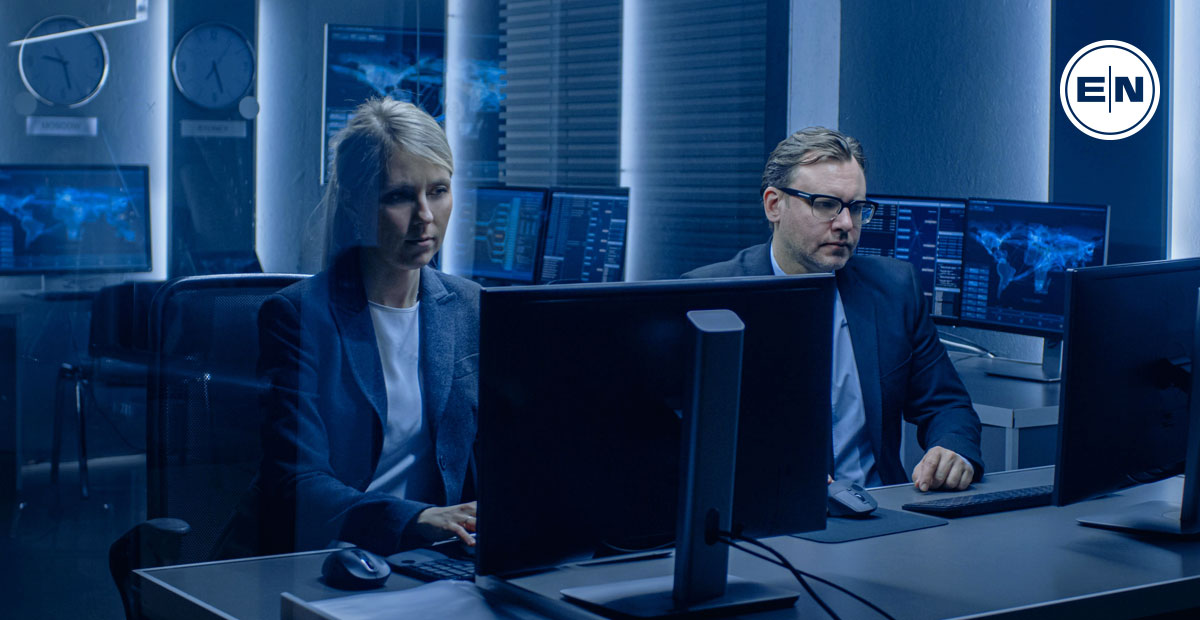Cyber Threat Monitoring – How to Understand the Threats

What is cyber threat monitoring?
Cyber threat monitoring is the dedicated and continual practice of analyzing and evaluating online data to detect any cyber threats or data breaches. Monitoring usually involves high-level access across networks and user actions, to be able to easily identify, stop and/or prevent any unwanted intrusions.
Why do we need it?
43% of cyber attacks are aimed at small businesses and are becoming more frequent and complex with each attack. Cyber threat monitoring is particularly important, as we exist in the digital age, the majority of information and transactions are completed online. This means that networks tend to hold a lot of important and sensitive information that is vulnerable to attack. Cyber threat monitoring enables high-level protection against the loss of sensitive data.
How does a company benefit from this service?
It has been estimated that cybercrimes are up by 600% as a result of the pandemic, which includes all types of crimes, such as data hacking and theft. Every industry is under threat and should take the necessary precautions to keep their business and sensitive information safe.
Cyber attacks can range in type and size; from a small inconvenience to a larger incident that results in legal and financial issues. Not all businesses will have the expertise in-house to continually monitor and analyze cyber threats, which as a result, can cost companies a fortune due to day-to-day disruption and even a damaged reputation. It has been suggested that only 14% of small businesses are prepared to defend themselves against a cyber attack.
Who should be responsible for the security and privacy of your data?
Everyone in the business is responsible for the protection and security of data, regardless of status. Every employee who handles customer information or sensitive business data should be briefed on the best practices in doing so, how to remain vigilant to security hackers, what to look out for, how to prevent a breach within their power, and how to report any suspicious activity.
Business owners should also take the initiative to put the right IT infrastructure and cyber threat monitoring in place, either through a specialist trained in-house team, via a trusted, managed service. Cyber monitoring is a crucial part of keeping a business safe from threats.
What are some examples of threats that can occur in cyberspace?
There are many ways you can protect yourself from hacking attacks. Regardless of how diligent or tech-savvy you think you are, cyber-attacks are becoming more sophisticated by the day. Here are few things you can do to get started and keep yourself safe from cyber threats:
- Computer virus
- Impersonating a brand
- Data breaches

What types of attacks have been used against companies over time?
Some of the most common attacks that have been used to date against companies are:
- Ransomware
- Data leakage
- Phishing
- Insider threat
- Hacking

What type of attack will you most likely encounter today?
One of the most popular attacks that you are most likely to encounter today is a phishing attack. This is one of the most widespread threats seen in businesses all around the world, accounting for 90% of breaches and over $12 billion in losses. A phishing attack is usually when someone impersonates another person or brand, tempting you to click on a link that will download a malicious file or provide them with sensitive data.
Who can benefit from cyber threat intelligence?
Cyber threat intelligence can benefit any business that is online and holds sensitive business and customer information. This is because it equips your business with the tools and knowledge to identify, mitigate and prevent cyber attacks on your business. It will also help your business identify any vulnerabilities in your infrastructure and more information about the attackers you may face. Cyber threat intelligence is evidence-based information that can help you make accurate and safer business decisions.
What can I do to protect myself from hacking attacks?
There are many ways you can protect yourself from hacking attacks. Regardless of how diligent or tech-savvy you think you are, cyber-attacks are becoming more sophisticated daily. Here are a few things you can do to get started and keep yourself safe from cyber threats:
- Keep yourself up-to-date with information on cyber crimes
- Regularly change your passwords
- Keep passwords different for different channels, ensure they are strong and unique, and store them in a safe place.
- Always verify the source of the emails/documents you receive, and if in doubt, go directly to the source.
- Install anti-virus software
- Keep all software up-to-date
- Use private networks
Is there anything that I can do to prevent an attack on my system?
To prevent any cyber attacks on your system, there are several practices you can adopt. Here are some examples to get you started:
- Train yourself and your staff
- Keep systems and software up-to-date at all times
- Install a firewall
- Control the access to your systems
- Use private networks and WiFi security
- Endpoint protection
- Employ cyber threat monitoring practices
With cyber threats increasing by the day, you must adopt as many best practices to your business as possible, to keep your business running and your data safe.
to Contact Us




